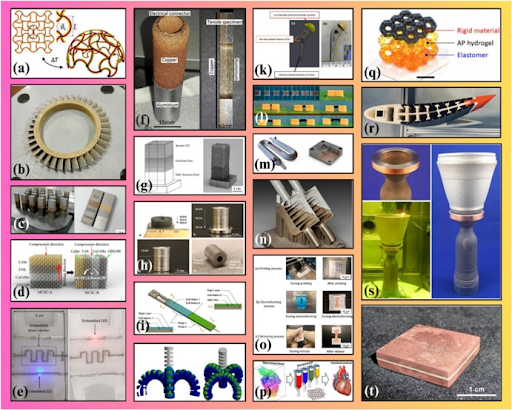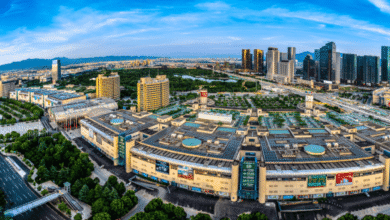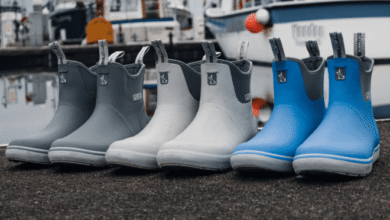White Paper Series Part 4: Material Selection & Process Guidelines for Additive Manufacturing

Introduction
Material selection is a critical factor in Design for Additive Manufacturing (DfAM), as different materials impact mechanical properties, durability, printability, and post-processing requirements. Unlike traditional manufacturing, where material choice is often dictated by machinability or moldability, AM offers a wide range of material options, including polymers, metals, and composites. However, each material comes with unique constraints based on the AM process used.
This white paper explores key material properties, process-specific considerations, and best practices for selecting materials in AM.
4.1 Polymers in Additive Manufacturing
Polymers are the most widely used materials in AM due to their low cost, ease of processing, and versatility. Different AM processes are optimized for specific polymer types.
Fused Deposition Modeling (FDM) Polymers
FDM uses thermoplastic filaments that are heated and extruded layer by layer. Common materials include:
- PLA (Polylactic Acid) → Low cost, biodegradable, but brittle and not suitable for high-temperature applications.
- ABS (Acrylonitrile Butadiene Styrene) → Higher strength, impact resistance, but requires a heated bed to prevent warping.
- PETG (Polyethylene Terephthalate Glycol) → More durable than PLA, with good chemical resistance.
- Nylon (PA12, PA6, etc.) → Strong, flexible, wear-resistant, used for functional prototypes and end-use parts.
FDM Polymer Considerations:
- Layer adhesion → Affects mechanical strength, particularly in the Z-axis.
- Warping and shrinkage → ABS and nylon require heated chambers to prevent defects.
- Post-processing requirements → Sanding or chemical smoothing improves surface finish.
Selective Laser Sintering (SLS) & Multi Jet Fusion (MJF) Polymers
SLS and MJF use powdered thermoplastics, which are sintered together layer by layer. Common materials include:
- Nylon 12 (PA12) → High strength, impact resistance, fatigue resistance, commonly used for industrial applications.
- Nylon 11 (PA11) → Greater flexibility and elongation, ideal for snap-fit parts.
- TPU (Thermoplastic Polyurethane) → Rubber-like flexibility, used for gaskets and seals.
SLS/MJF Polymer Considerations:
- Powder recycling → Some unsintered powder can be reused, reducing material costs.
- No support structures needed → Powder itself acts as a natural support.
- Post-processing options → Dyeing, vapor smoothing, or bead blasting enhance surface finish.
Stereolithography (SLA) & Digital Light Processing (DLP) Resins
SLA and DLP use photopolymer resins cured by UV light, producing high-resolution, smooth-surfaced parts. Resin options include:
- Standard resins → Brittle, best for prototypes and aesthetic models.
- Tough resins → Formulated for higher impact resistance.
- Flexible resins → Mimic rubber or silicone for soft-touch applications.
- High-temperature resins → Withstand heat up to 200°C, used in functional prototypes.
SLA/DLP Resin Considerations:
- Brittle nature → Not ideal for high-load applications.
- Post-curing required → UV curing enhances mechanical strength.
- Limited chemical resistance → Susceptible to moisture and solvents.
4.2 Metals in Additive Manufacturing
Metal AM processes offer high-strength, high-performance parts for aerospace, automotive, and medical applications. Common metal AM processes include Direct Metal Laser Sintering (DMLS), Electron Beam Melting (EBM), and Binder Jetting.
Common Metal AM Materials
- Stainless Steel (316L, 17-4 PH) → Corrosion-resistant, high strength, used for medical and industrial applications.
- Titanium (Ti-6Al-4V) → Lightweight, biocompatible, high strength, widely used in aerospace and medical implants.
- Aluminum (AlSi10Mg, 6061) → Good thermal properties, lightweight, ideal for automotive and aerospace.
- Inconel (625, 718) → Heat-resistant, high-strength, used in gas turbines and rocket engines.
- Cobalt-Chrome (CoCr) → Biocompatible, wear-resistant, often used in dental and orthopedic implants.
Metal AM Considerations
- Thermal stress and warping → High-powered lasers create residual stresses, requiring heat treatment.
- Support structures required → Needed for overhangs and heat dissipation.
- Post-processing required → Machining, polishing, and stress-relieving improve surface finish and tolerances.
4.3 Composite Materials in Additive Manufacturing
Composite materials combine a polymer matrix with reinforcing fibers, enhancing strength, durability, and heat resistance. Common AM composites include:
- Carbon fiber-reinforced polymers (CFRP) → High strength-to-weight ratio, used in automotive and aerospace.
- Glass fiber-reinforced nylon → More affordable than carbon fiber, used for functional prototypes.
- Kevlar-reinforced thermoplastics → Abrasion-resistant, impact-resistant, ideal for high-wear components.
Key Considerations:
- Continuous fiber vs. chopped fiber reinforcement → Continuous fibers provide better strength but are limited in print orientation.
- Thermal expansion → Composite materials may experience anisotropic thermal expansion, requiring careful design optimization.
4.4 Process-Specific Design Considerations
Each AM process has different material constraints, affecting design decisions, tolerances, and manufacturability.
| Process | Material Types | Key Strengths | Limitations |
| FDM | PLA, ABS, PETG, Nylon | Low cost, easy to print | Poor surface finish, visible layers |
| SLS/MJF | Nylon 12, TPU | High strength, no supports | Powder removal required |
| SLA/DLP | Resins (Standard, Tough, Flexible) | High resolution, smooth surface | Brittle, requires curing |
| DMLS/EBM | Titanium, Stainless Steel, Inconel | High strength, aerospace-ready | Expensive, support removal needed |
| Binder Jetting | Stainless Steel, Ceramics | High throughput, low-cost metal printing | Requires post-processing sintering |
Each process imposes design constraints, such as minimum feature sizes, layer resolution, and thermal stress management.
Conclusion
Material selection is one of the most critical factors in successful Design for Additive Manufacturing (DfAM). The right material impacts mechanical performance, manufacturability, and cost efficiency. Unlike traditional manufacturing, AM provides greater material flexibility, but each process introduces unique challenges related to thermal stress, anisotropy, support structures, and post-processing.
By carefully selecting the best material-process combination, companies can:
- Enhance part performance by leveraging high-strength polymers, metals, and composites.
- Reduce costs by optimizing material usage, minimizing waste, and streamlining post-processing.
- Ensure manufacturability by accounting for process-specific constraints from the design phase.
Call to Action: Maximize Your AM Potential with RapidMade
Choosing the right material and process is essential for high-performance, cost-effective AM production. RapidMade provides DfAM expertise to ensure your designs are optimized for manufacturability and efficiency.
Visit RapidMade today for a consultation or custom quote.




